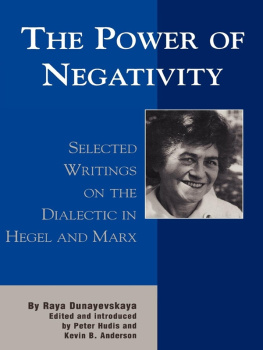First published 1978 by Thames and Hudson Limited
and Pearson Education Limited
Second edition 1995
Published 2014 by Routledge
2 Park Square, Milton Park, Abingdon, Oxon OX14 4RN
711 Third Avenue, New York, NY 10017, USA
Routledge is an imprint of the Taylor & Francis Group, an informa business
M.S. Anderson 1978, 1995
The right of M. S. Anderson to be identified as author of this Work has been asserted by him in accordance with the Copyright, Designs and Patents Act 1988.
All rights reserved. No part of this book may be reprinted or reproduced or utilised in any form or by any electronic, mechanical, or other means, now known or hereafter invented, including photocopying and recording, or in any information storage or retrieval system, without permission in writing from the publishers.
Notices
Knowledge and best practice in this field are constantly changing. As new research and experience broaden our understanding, changes in research methods, professional practices, or medical treatment may become necessary.
Practitioners and researchers must always rely on their own experience and knowledge in evaluating and using any information, methods, compounds, or experiments described herein. In using such information or methods they should be mindful of their own safety and the safety of others, including parties for whom they have a professional responsibility.
To the fullest extent of the law, neither the Publisher nor the authors, contributors, or editors, assume any liability for any injury and/or damage to persons or property as a matter of products liability, negligence or otherwise, or from any use or operation of any methods, products, instructions, or ideas contained in the material herein.
ISBN 13: 978-0-582-43746-3 (pbk)
British Library Cataloguing-in-Publication Data
A catalogue record for this book can be obtained from the British Library
Library of Congress Cataloging-in-Publication Data
Anderson, M. S. (Matthew Smith)
Peter the Great / M.S. Anderson.
p. cm. (Profiles in power)
Includes bibliographical references and index.
ISBN 0-582-43746-6
1. Peter I, Emperor of Russia, 16721725. 2. RussiaKings and rulers
Biography. 3. RussiaHistoryPeter I, 1689-1725. I. Title. II. Series.
DK131 A49.2000
947.05092-dc21
[B]
00-061477
The complexities of Peter the Greats character and achievements, coupled with the immensity of the historical literature on every aspect of his reign, make the writing of a short biography of him a somewhat intimidating challenge. In meeting it I have been greatly helped by the encouragement and criticism provided by Professor Ragnhild Hatton, the editor of the Thames and Hudson series Men in Office in which the first edition of this book was published in 1978. I am also deeply indebted to Dr Isabel de Madariaga, whose careful and expert reading of the typescript has much improved and strengthened it. For the errors and inadequacies which must inevitably remain I alone am responsible. I also wish to thank Mrs N. E. Walsh for her skilful typing of the final draft, while it is a particular pleasure to acknowledge the help I have received, not merely in the preparation of this book but over the whole course of the last quarter-century, from the library of the London School of Economics.
It has seemed appropriate, in a book which hopes to reach a relatively wide and non-expert public, to give personal names frequently used in the text in their English rather than their Russian form, e.g. Alexis rather than Aleksey, and to refrain from italicizing a few Russian terms, e.g. boyar, which may be considered as to some extent familiar to the reading public.
M. S. Anderson
London School of Economics
Chapter 1
Russia before Peter: Modernization and Resistance
The Russia into which Peter was born, on 9 June 1672, was already in some ways a part of Europe, or rapidly becoming one. It differed radically, none the less, from the states and societies to be found further west. Though much smaller in terms of territory than it was to become under Peter and his successors, it already covered a huge area. In the west it was severed from the Baltic by Swedens possession of Finland, Ingria and Estonia. The great fortress-city of Smolensk, only 150 miles west of Moscow, bitterly contested for many years, had been finally wrested from the Poles as recently as 1654, and not until 1667 was the Polish Republic forced to surrender Kiev. Moreover, Russia had no outlet on the Black Sea, from which it was separated by hundreds of miles of largely uninhabited steppe as well as by the Moslem Nogais and Tatars of the Khanate of the Crimea, a vassal-state of the Ottoman empire since the later fifteenth century. Its only usable coastline, on the White Sea in the far north, where the new port of Archangel had been established at the end of the sixteenth century, was blocked by ice for much of the year. In the Caucasus, though its influence was growing, Russia as yet held no territory. It had nevertheless, in spite of these still restricted European frontiers, already shown both the desire and the capacity for territorial growth on a great scale. In the 1550s Ivan IV (Ivan the Terrible) had made a gigantic forward step by conquering the Tatar khanates of Kazan and Astrakhan, thus gaining control of the whole course of the river Volga. From the 1580s onwards the exploration and conquest of Siberia had been pushed ahead with remarkable speed, so that by the 1630s Russian adventurers had already reached the shores of the north Pacific. Long before Peters birth, therefore, his country had become, in mere size, a giant who dwarfed all the states of Europe.












